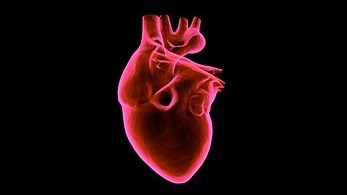Last updated on April 22nd, 2025 at 11:12 am

Postmenopausal women who have more fats on their belly as compared to thigh is in more risk of cardiovascular disease suggest a recent study. This still holds true if your BMI is normal.
That study that was published in the European Heart Journal on 30 June 2019 clearly states that postmenopausal women with normal BMI with greater depostion of fat on belly is at increased risk of cardiovascular disease.
It’s a first of its kind of research that links cardiovascular disease risk to the location (e.g. upper body vs. lower body) among normal BMI postmenopausal women. Interestingly, a different study found that your scalp hair can predict risk of future heart disease..
So, are your interested to learn how the research was carried out?
Let’s get started.
Introduction
BMI (Body Mass Index) tells us whether our body weight is appropriate for our height, its a way to know whether we are overweight or obese. But it has some limitations.
BMI doesn’t give us the idea of body fat mass distribution. Having said this individuals within the same BMI category could have substantial differences in the amount and distribution of body fat and therefore variable health risks.
For example, that larger waist circumference is associated with increased risk of cardiovascular disease (CVD) mortality among people with normal BMI.
For those who are unaware of BMI, it’s a short form of Body Mass Index which is the measure of weight proportionate to the height. Read further on BMI and measure your own.
The biological functions of adipose tissue are location dependent, there is mounting evidence that trunk fat mass is a strong predictor of unfavorable metabolic features (e.g. insulin resistance) that increase CVD risk, whereas increased leg fat may be associated with decreased risk of metabolic disturbances.
Research methodology
Researchers included 2683 postmenopausal women with normal BMI (18.5 to <25 kg/m2) who participated in the Women’s Health Initiative and had no known CVD at baseline.
Body composition was determined by dual energy X-ray absorptiometry. Incident CVD events including coronary heart disease and stroke were ascertained through February 2017. During a median 17.9 years of follow-up, 291 incident CVD cases occurred. After adjustment for demographic, lifestyle, and clinical risk factors, neither whole-body fat mass nor fat percentage was associated with CVD risk.
Higher percent trunk fat was associated with increased risk of CVD [highest vs. lowest quartile hazard ratio (HR) = 1.91, 95% confidence interval (CI) 1.33–2.74; P-trend <0.001], whereas higher percent leg fat was associated with decreased risk of CVD (highest vs. lowest quartile HR = 0.62, 95% CI 0.43–0.89; P-trend = 0.008).
The association for trunk fat was attenuated yet remained significant after further adjustment for waist circumference or waist-to-hip ratio. Higher percent trunk fat combined with lower percent leg fat was associated with a particularly high risk of CVD (HR comparing extreme groups = 3.33, 95% CI 1.46–7.62).
Result of the research
Among postmenopausal women with normal BMI, both elevated trunk fat and reduced leg fat are associated with increased risk of CVD.
There is also a research on elderly according to which respiratory symptoms in elderly may predict life expectancy (symptoms like cough, wheeze).
Resource:
- Association between regional body fat and cardiovascular disease risk among postmenopausal women with normal body mass index (published on European Heart Journal,30 June 2019): https://academic.oup.com/eurheartj/advance-article/doi/10.1093/eurheartj/ehz391/5524773
The author is a physiotherapist who has been practising for the last 17 years. He holds a Bachelor's in Physiotherapy (BPT) from SVNIRTAR (Swami Vivekananda National Institute of Rehabilitation and Research), one of the prestigious physiotherapy schools in India.
Whatever he learns dealing with his patient, he shares it with the world through blogs and e-books. He also owns a YouTube channel, "Sunit Physiotherapist" with over 8 lakh active subscribers. Here, he shares everything he gets to learn serving the patient.





